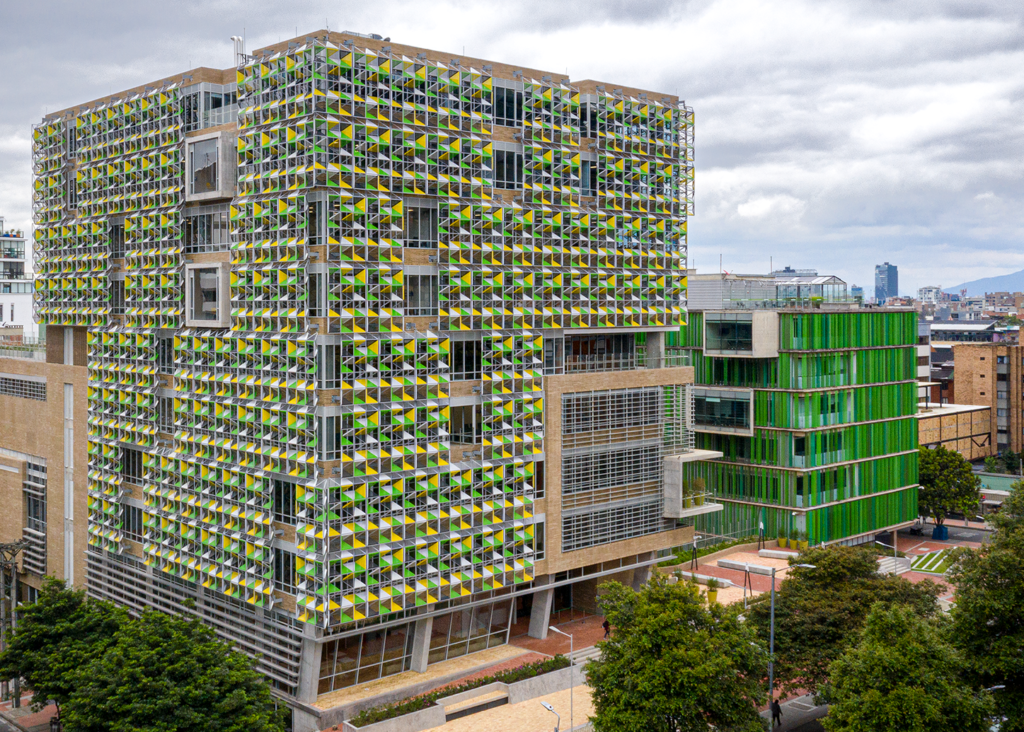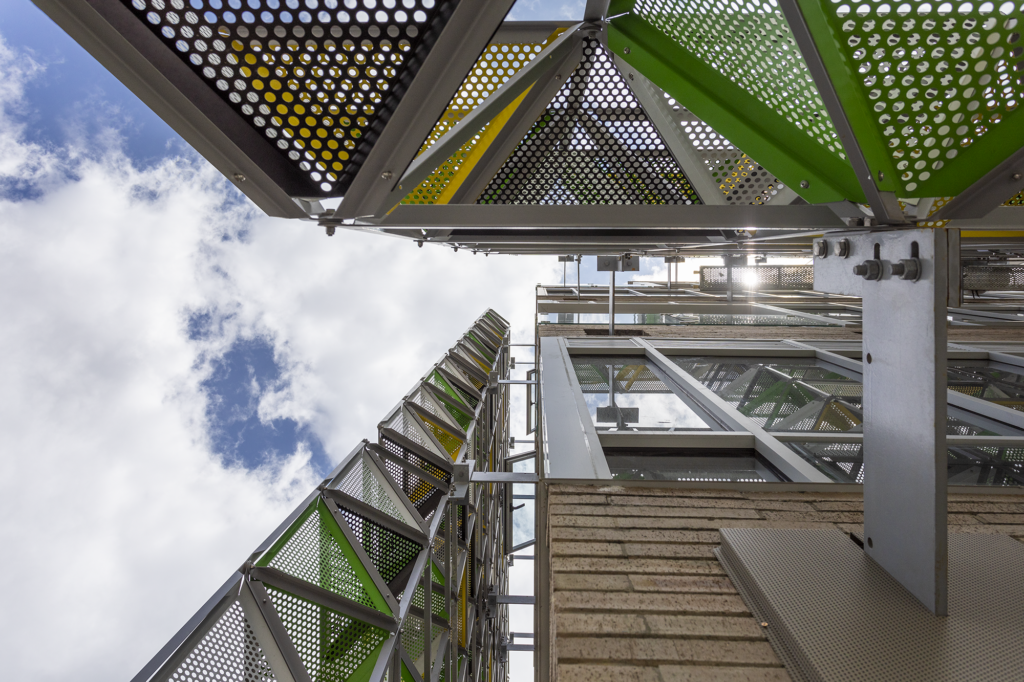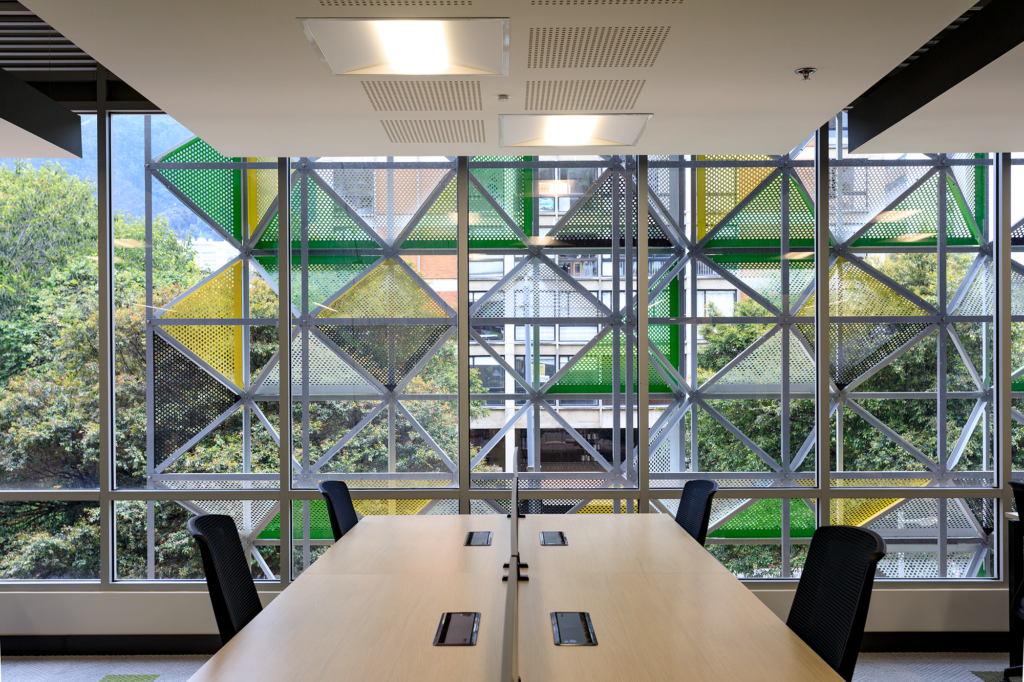William McDonough + Partners’ (WM+P) Project Legacy at Universidad EAN in Bogotà, Colombia is designed to illustrate the potential of Cradle to Cradle® and the circular economy. The team designed this school to be like a living, breathing organism, native to and a part of its environment — its colorful façade captures the exuberance inherent in Colombian culture.

The university’s curriculum supports their higher purpose of developing skills in sustainable entrepreneurship as fundamental to the creation of abundance for humanity. The building itself is an expression of Design for the Circular Economy principles, proving for the University, the City of Bogotá and local industry that green building projects can support circular ecosystems.
EAN Legacy’s most prominent feature is its WonderFrame™ shade structure, inspired by WM+P Founding Principal William McDonough’s IceHouse pavilion and designed in-house by the firm’s team. Fabricated by a local Hunter Douglas factory, the UEAN WonderFrame is a modular, multi-functional building system designed for efficient assembly. The metal frame is clad with multi-colored perforated panels, metaphorically invoking tree leaves and providing shade while simultaneously admitting daylight, demonstrating material and energy efficiency. Covering roughly 85% of the façade, the WonderFrame stands as the largest installation of this modular building system to date.

The WonderFrame also facilitates the flow of wind currents to direct filtered air into the building and out of its solar chimneys. The building is one of the first to implement a new Verification Protocol for Engineered Natural Ventilation Systems in Equatorial Climates, developed by Bogotá-based environmental engineering consultants (and design team members) for the Colombia Green Building Council to standardize the use of natural ventilation as a LEED energy effectiveness strategy.
The project team also focused on innovation during the material procurement process. In a joint effort by the design team and University EAN, building material suppliers were selected according to a matrix of project sustainability standards. Acemar provided FSC Certified wood veneer panels for the building, including their Linea Domus wood panels that are integrated into the auditorium walls and seating, which ultimately achieved Cradle to Cradle Certified™ Bronze.

Beyond being optimized for occupant wellbeing, the academic building provides ample space for collaboration, as well as functioning as a student center, classroom and administration building. The structure provides a variety of spaces for convening events as well as study spaces for relaxation. Amenities include a full-size indoor basketball court, an exercise room, the University’s first full-service cafeteria, a room dedicated to multi-cultural events and a quiet room containing sleeping pods. Importantly, EAN Legacy brings the outside in, connecting to outdoor plazas and terraces at multiple levels.
Standing as a new icon for the city, and a beacon of sustainability in the Americas, the University’s new center for technology and entrepreneurship was created through regenerative, circular economy-inspired innovations in architecture and construction, materials sourcing, and collaborations across the country.
